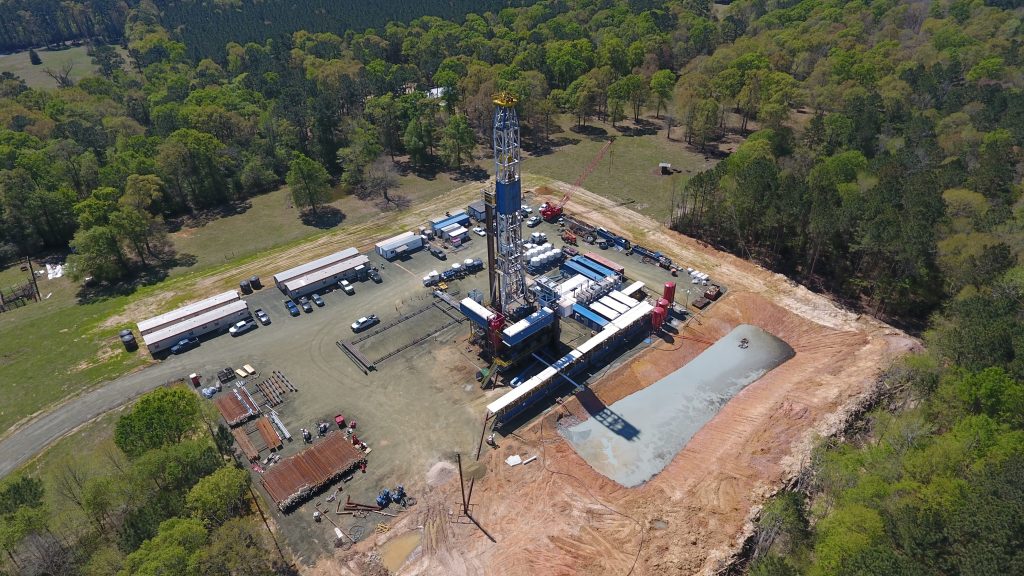
The United States controlled oil prices and was the world’s largest producer of oil up until the mid-20th century. OPEC, or the Organization of the Petroleum Exporting Countries then ruled oil prices and the oil markets in the following years.
With advances in drilling techniques and the discovery of shale oil, the U.S. once again emerged as a top oil producer and has achieved energy independence, with energy exports surpassing net imports.
United States
The United States was the first country that commercially-extracted oil. Being the largest oil-producing country in the world, America holds pricing power. During the early years, prices were high and volatile since the process of extraction and refining was lacking the economies of sale that are now being exercised today.
For instance, the price per barrel of oil in the early 1860s reached a peak of 120 dollars in today’s terms, partly due to the U.S. Civil War’s rising demand. Over the next five years, prices fell above 60 percent, only to rise 50 percent higher in the following years.
The discovery of the Spindletop refinery in Texas in 1901 opened the floodgates of oil in the American economy, which resulted in the fast development of the oil industry in the U.S. The introduction of specialized pipelines and increased supply are two factors that resulted in the reduction of oil price. With the discovery of oil in Iran in 1908 and Saudi Arabia in 1930, the supply and demand for oil continued to rise.
The European coal shortage that followed and the use of oil in weaponry in the mid-twentieth century intensified the demand for oil, causing oil prices to crash down. During the economic boom during the 1950s and 1960s and the Vietnam war, the U.S. started to rely on imported oil. This provided OPEC amplified leverage to influence the prices of oil.
OPEC
Composed of 13 countries, OPEC was formed with the aim of negotiating matters with regard to oil production and prices. The oil shock during 1973 swung the pendulum in its favor. Iran and OPEC stopped oil supplies to the U.S. in response to America’s support for Israel during the Yom Kippur War.
Through its pricing over volume strategy, OPEC controls the prices of oil. Numerous world events have aided OPEC in maintaining its control over oil prices. The Asian financial crisis resulted in reduced oil demand due to some currency devaluations, while the fall of the Soviet Union in 1991 and its resulting economic tumult had the opposite effect, disrupting Russia’s oil production for a couple of years. During these instances, OPEC was able to maintain a constant rate of oil production.
contact dw energy
Want to learn more about oil & gas investing? Our expert team can provide you with more information or schedule a consultation to talk about diversifying your investment portfolio.

The Future for OPEC and the United States
Today, OPEC’s control over the price of oil seems to be slipping. The U.S. was able to achieve near-record volumes of oil production since the discovery of shale oil in North America. Oil production in the U.S. was almost at 19.5 million barrels per day in 2019, making it the biggest oil-producing country in the world. Crude oil exports by OPEC represent 60 percent of internationally-traded oil.
The oil economy’s dynamics are complex, and the process of oil price determination goes beyond the simple demand and supply market rules, although at its most basic level the market is the final arbitrator of oil prices. Theoretically, prices should drop when the supply and demand increase, and vice versa.
In reality, however, it is quite different. With its status as a globally preferred energy source, oil’s pricing has become more complex. Supply and demand are only part of the big equation that has elements of environmental concerns and geopolitics.
Countries that have pricing power over oil control important levers of the global economy. Today, the U.S. has achieved a form of energy independence, with energy exports surpassing imports. U.S. oil companies produce more oil to capture higher profits as oil prices rise, limiting the ability of OPEC to influence its price. The United States today is one of the biggest oil consumers in the world, and as home production rises, there will be less demand for OPEC oil in America.
The United States remains the world champion of oil production, with Texas as its main domestic producer of oil and gas. Texas is home to the Permian, the most productive oil basin in the United States. In 2020 alone, the state produced 1.7 million barrels in total. Are you a qualified investor looking to maximize the potential benefits of direct participation in domestic oil and gas production? Oil and gas is a dependable, consistent investment option that can give you lucrative returns, all while taking advantage of great tax benefits. DW Energy Group is here to help. To learn more about potential opportunities in Texas – the major oil-producing state in the U.S. – get in touch.
Contact dw energy
Sources:
The U.S. Shale Revolution,” The University of Texas at Austin, https://www.strausscenter.org/energy-and-security-project/the-u-s-shale-revolution/
“An Annotated History of Oil Prices Since 1861,” Business Insider, https://www.businessinsider.com/annotated-history-crude-oil-prices-since-1861-2014-12
“Spindletop launches Modern Petroleum Industry,” The American Oil and Gas Historical Society, https://aoghs.org/petroleum-pioneers/spindletop-launches-modern-oil-industry/
“Our History,” Saudi Arabia Oil Co., https://www.aramco.com/en/who-we-are/overview/our-history
“Coal as a nationalised industry,” The National Archives, https://www.nationalarchives.gov.uk/cabinetpapers/themes/coal-nationalised-industry.htm
“Brief History,” Organization of the Petroleum Exporting Countries, https://www.opec.org/opec_web/en/about_us/24.htm
“Oil Embargo, 1973–1974,” U.S. Department of State, Office of the Historian, https://history.state.gov/milestones/1969-1976/oil-embargo
“What countries are the top producers and consumers of oil?,” U.S. Energy Information Administration, https://www.eia.gov/tools/faqs/faq.php?id=709&t=6
“What drives crude oil prices: Supply OPEC,” U.S. Energy Information Administration, https://www.eia.gov/finance/markets/crudeoil/supply-opec.php
